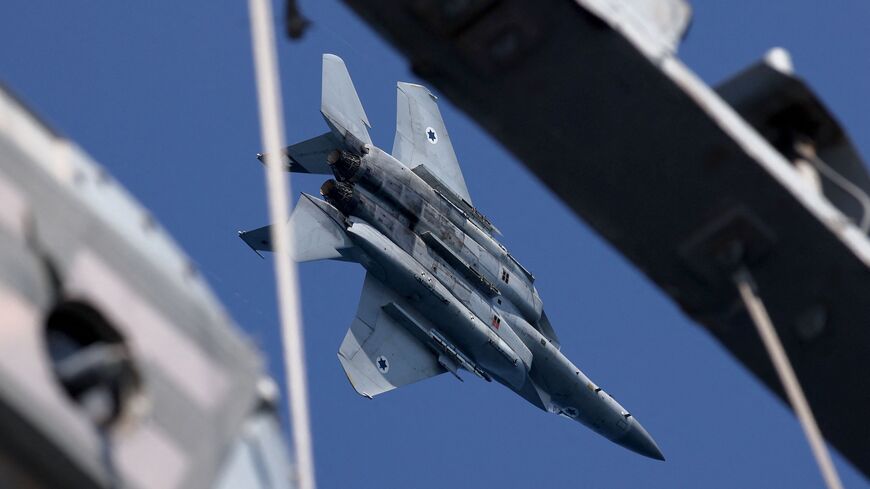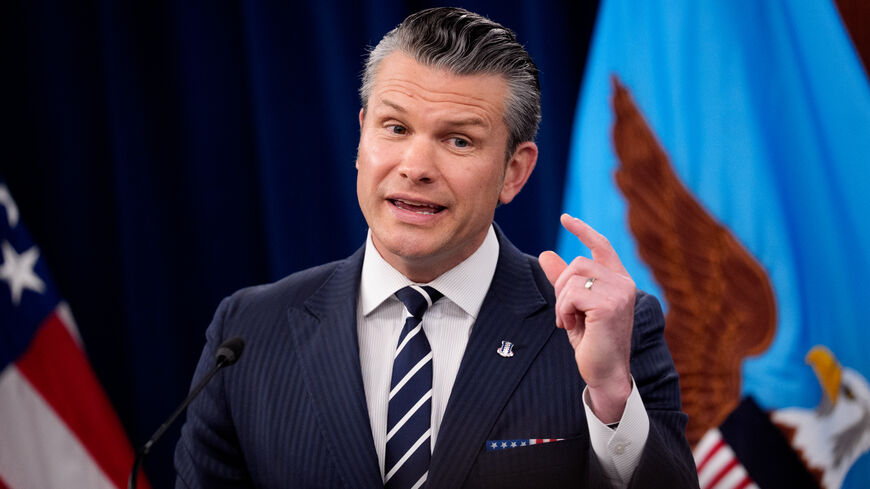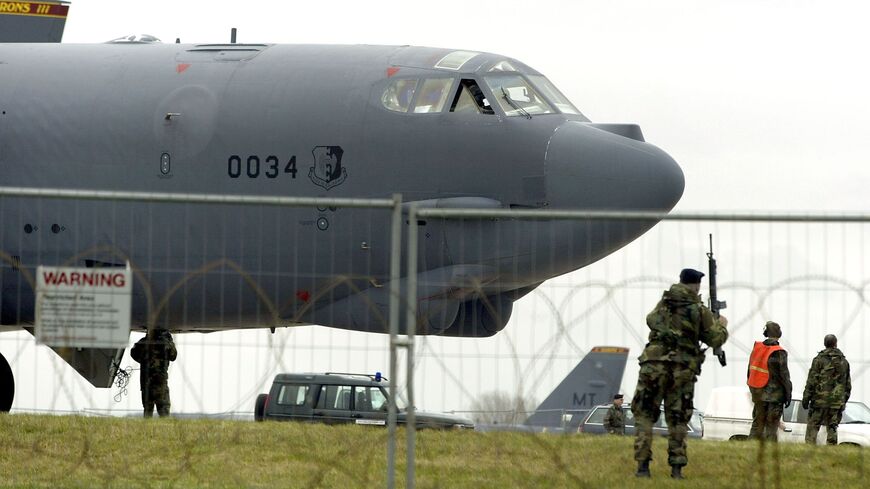US strikes on Iran included F-22s, F-35s, Hegseth says
Netanyahu expressed gratitude for the US' long-range bombing of Iran's key nuclear sites, but failed to earn a public endorsement from Washington for further Israeli strikes on Iran.

WASHINGTON — The US Air Force’s long-range bombing of Iran’s strategic nuclear facilities included stealth-capable F-22 Raptor and F-35 Lightning II fighter aircraft, the Pentagon’s top official revealed on Wednesday.
Seated across from Israeli Prime Minister Benjamin Netanyahu ahead of a bilateral meeting at the Pentagon, US Defense Secretary Pete Hegseth credited the American pilots who flew B-2 Spirit bombers and the fifth-generation fighter jets in the June 22 surprise strikes that knocked out key Iranian nuclear facilities.
Hegseth and Netanyahu exchanged warm words and mutual praise in front of the cameras, with the former praising the outgoing top commander of US forces in the Middle East, US Army Gen. Michael “Erik” Kurilla.
Kurilla, who oversaw the strikes and attended Wednesday's meeting with Netanyahu, was the first US official greeted by the Israeli premier as he entered the room after Hegseth.
Background: The current chairman of the Joint Chiefs of Staff, US Air Force Gen. Dan Caine, told reporters in the aftermath of the long-range airstrikes on Natanz, Fordow and Isfahan last month that “Iran's surface-to-air missile systems did not see us.”
Israeli air-to-ground strikes against Iran’s air defenses eased the resistance along the bombers’ paths to the target, CENTCOM’s deputy commander, Vice Adm. Brad Cooper, told Senate lawmakers late last month. Cooper denied that Israeli forces were directly associated with the US strike operation.
The Israeli Air Force modified its F-35 Adirs to enlarge their fuel capacity while also deploying new long-range, precision-guided standoff munitions to overcome the range limitations that had long inhibited the IAF's ability to strike Iranian territory, Israel's ambassador to the UN, Danny Danon, confirmed to Al-Monitor last week.
But the Israeli Air Force has remained unable to penetrate the crown jewel of Iran's nuclear enrichment program: the subterranean uranium enrichment facility at Fordow.
“Your role, I think … will have historic consequences for peace,” Netanyahu said to Hegseth’s entourage on Wednesday, which included the Pentagon’s top two civilian officials, Deputy Defense Secretary Steve Feinberg and Under Secretary of Defense for Policy Elbridge Colby.
The US military's no.-2 top-ranking officer and vice chairman of the Joint Chiefs of Staff, US Navy Adm. Christopher Grady, and Cooper, Kurilla’s deputy and nominated successor as CENTCOM commander, also attended the meeting.
Why it matters: Pentagon officials have thus far been reluctant to publicly confirm the type of fighter aircraft that escorted the B-2s to their targets.
Despite the presence of two US Navy aircraft carriers in the region at the time of the US strikes, the B-2s’ escorting aircraft were launched from land bases in the region, two officials familiar with the operation told Al-Monitor.
Caine quietly visited Muwaffaq Salti Air Base in Jordan during a trip to the region following the US strikes on Iran late last month, Al-Monitor has learned.
The top general also met with the crew of the USS Thomas Hudner, which, along with four other US Navy destroyers then based off Israel’s coast in the eastern Mediterranean, intercepted multiple Iranian ballistic missiles fired toward Israel during the 12-day June war.
Know more: The Israeli prime minister’s visit to Washington ended without a Gaza ceasefire announcement and without a public endorsement from the US president for further Israeli strikes on Iran.
Trump on Tuesday said that US officials would return to diplomatic negotiations with Iranian counterparts “soon.” Iranian officials have yet to confirm Trump's claim.
What’s next: Netanyahu is scheduled to return to Israel on Thursday, but his stay in the United States may be extended, people familiar with the matter said.




